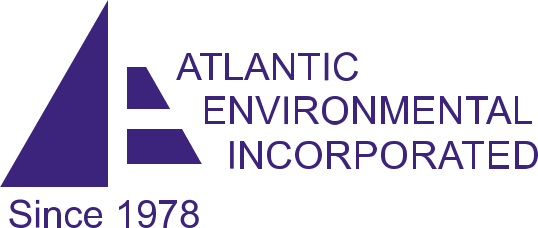If you need nanoparticles consulting as discussed in this article call us at 973-366-4660 or email us at info@atlenv.com for details and a free estimate.
Written by Henry P. Shotwell, Ph.D., CIH, Vice-President, and Robert E. Sheriff, MS, CIH, CSP, President
November 14, 2018, Updated Jan. 3.2020
Nanoparticle Definition
“Nanoparticle” is a catch-all term. There is no consensus on definitions or nomenclature for nanoparticles or nano aerosols. Other terms for this material include “Ultrafine Particle” (less than 100 nm in diameter). Current terminology for measuring worker exposure to particulates does not take particle size ranges into account.
Nanometer
A nanometer is a one-one thousandth of a micron, which is a one-one thousandth of a milligram, which is a one-one thousandth of a gram, which in turn, is the thousandth part of a kilogram which is the reference unit of mass in the metric system. Thus, 1 kg = 1,000g = 1,000,000 mg = 1,000,000,000 mcg = 1,000,000,000,000 ng. One nanogram is 1 x 10 E – 12 kg. An example of nanoparticles is the materials used in 3D printers.
Nanoparticle Processes
There are four main processes by which nanoparticles are produced: gas-phase, vapor deposition, colloidal and attrition. All four production methods carry with them the potential for occupational exposure by the inhalation (most prevalent), dermal and ingestion routes.
Exposure
Exposures are likely to occur from process leakage, material transfer, and storage, from bag out, from repair and maintenance activities, and from end-users, including other processes.
When released into the air, nanoparticles may agglomerate (individual particles held together in clumps by weak forces) or aggregate (clumps of nanoparticles held together by strong forces).
Health Hazards
Adverse health effects from inhaling ultrafine particles are not associated with mass. The toxicity of inhaled, insoluble materials increases as particle size decreases and surface area increases. Nanoparticles are capable of penetrating alveolar cells and passing into the bloodstream. Similarly, nanoparticles can penetrate the skin. Nanoparticles can pass through the cells of the digestive system too, either after direct ingestion or by swallowing particles cleared from the respiratory tract by the mucociliary elevator, following inhalation.
Little is known about current industrial exposure levels or of the toxicological consequences from exposure to nanoparticles. But, Carbon Nano Tubes (CNT) can be considered to be fibers, similar to asbestos or fiberglass. They seem to have similar physical properties.
Measuring and Evaluation
Currently, there are instruments available for industrial hygiene field use that can measure particle numbers, particle size ranges or surface area in ways that would be useful in assessing risk. Measuring particle mass is not enough. Particle number counts would be better; particle surface area would be best. There are particle counters whose size range include nano-sized-particles.
Particle size governs aerosol behavior. At the nanoparticle level, diffusional forces dominate and the nano aerosol behaves more like a gas than an airborne particulate. Nanoparticle diffusion is the same as Brownian Motion. Nanoaerosols have no inertia: they diffuse rapidly through the air and remain in the air for a long time. Therefore, engineering controls must treat nano aerosol like gases in order to be efficient.
Summary
- Inhalation exposure is the most prevalent route.
- Little is known of the toxicology of nano-sized particulates.
- Surface area and numbers of particles seem to be more important indices of exposure than weight.
- Currently, there are effective means to measure and evaluate exposures to the nanoparticulate surface area.
Our primary service areas are: NJ, NY, NYC, PA, CT, DE, (Boston) MA, RI, Wash DC, WI, MD, MI, (Chicago) IL, VA, IN, (Atlanta) GA, AL, NC, SC, TN, (Dallas, Ft Worth) TX, OK, DC, AR. We can service most other areas of the U.S. but with some added travel charges.
Contact us using our contact form or call us at 973-366-4660 to discuss your unique needs and obtain a complimentary, no-obligation quotation for industrial hygiene services tailored to your company’s requirements.



